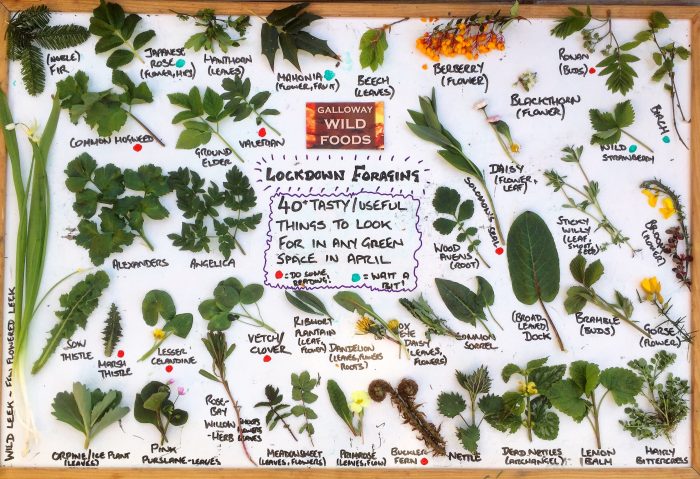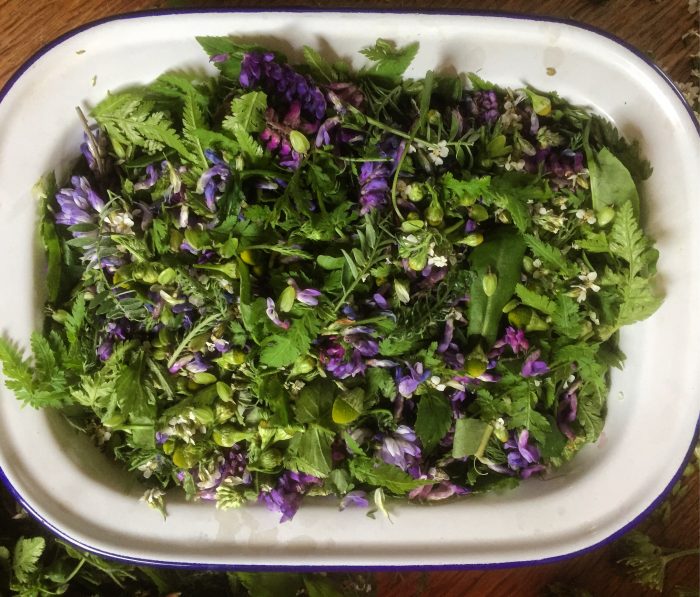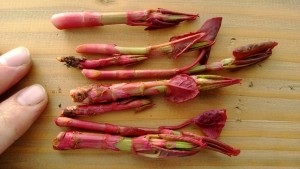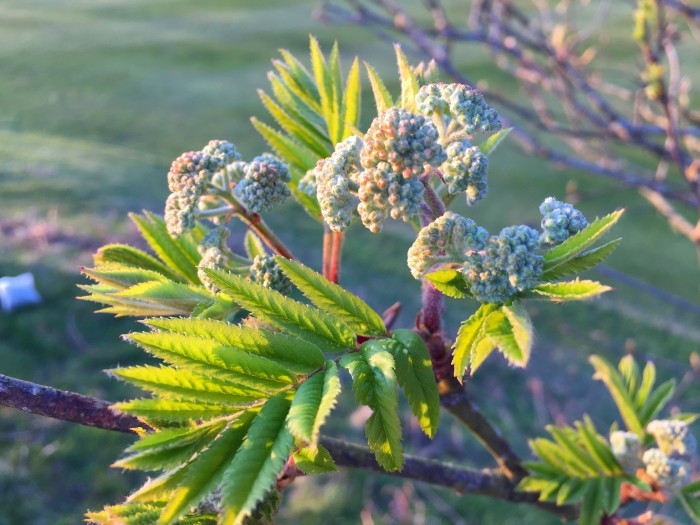Foraging during the Corona Virus Pandemic
Full lockdown does not rule out foraging, which is both food procurement and exercise, but you should be careful to do this responsibly and without travelling beyond the restriction levels for your area. There are thousands of tiny victories we can win over this virus every day, without being unsafe or irresponsible. The first lockdown saw many people turning to foraging for nature connection, solace and their mental health as much as a source of food.
Remember that it may be possible to transmit the virus via the plants you harvest, so foraging is best done within your bubble. If you intend to offer harvests to people out with your bubble you should employ careful hand washing, and wash your harvest thoroughly – or cook it – before passing it on.
Foraging starts at home, and if you have safe access to even the smallest area of green space, foraging, or just getting to know plants a bit better, can be very helpful in keeping us mentally and physically active, and for relieving stress or anxiety.

Lockdown Foraging – 40 or so useful, accessible wild plants
Nature is trying to help us and if we can use this time of difficulty to improve our ID skills and explore creative uses for everyday weeds, it will help us in the moment, and be a better ally during the challenges ahead.
There is lots of free information on my Wild Food Guide and other free resources to help get you going, and I developed my online Wild Food Mentoring service to support people during the first lockdown and it proved so popular that I have rolled it out as a permanent service.
There has never been a more apt time to connect with wild foods. Why?
- Busy shops are potential transmission hubs for the virus. I hardly ever see another soul when i’m harvesting wild foods
- Equipping yourself with the skills and knowledge to eat eat locally abundant wild foods will support resilience in individuals and communities as the economic crisis arising from the outbreak, Brexit and climate change develops
- Time spent in nature helps to relieve information overload and anxiety
- Eating a biodiverse diet helps to support a healthy immune system.
- Some wild foods are specifically good at boosting your immune system – see below.
- Between Corona virus and Brexit, many supply chains are overstretched, and some prices are escalating. The wild food supermarket is very well stocked, especially in spring, even in waste ground and gardens.
Some wild plants and fungi to help keep you healthy.
There are no miracle cures for anything out there.
But there are lots of ways to help you stay physically and mentally stronger at this challenging time.
I offer these in no way as an alternative to following professional medical advice or vaccination, but as useful things to support your overall wellbeing during these difficult times. If nothing else, the time spent connecting with plants can have a calming effect. Check out this guest blog by award winning writer Sarah Thomas on how foraging helped her during the first lockdown.
Good health and a strong immune system are best supported by the sort of biodiverse eating that foraging naturally promotes. Here are some things that most green spaces, including waste ground and all but the neatest gardens, are quite likely to have. It might be a fun project to see how many of these you can find. Click on the names for more information…
- Nettles
- Common hogweed
- Rosebay Willowherb/Fireweed
- Dock
- Dandelion
- Bramble buds
- Hairy bittercress
- Ground elder
- Chickweed
- Sticky Willy/Goosegrass/Cleavers
- Pignuts
- Sorrel
- Yarrow
- Daisies
- Magnolia petals
- Ribwort plantain
- Blackthorn
- Hawthorn leaves
- Rowan buds
Below are a few more wild things that I think are particularly timely just now, or generally useful for helping us to stay healthy. You should not be travelling unnecessarily to find these during the lockdown, but none are rare and you might get lucky near home. Some are available through mail order. Follow the links for more information, insight and recipes:
- Wild garlic
- Wild leeks
- Elderberries
- Sea buckthorn
- Japanese knotweed
- Chaga
- Turkeytail
- Birch polypore
- Spring wild foods
Good Information About Herbal Antiviral Treatments:
- Advice from practicing herbalist Julie Brunton-Seal on Staying Well and Treating Viral Infections
- Sensible, evidence-based advice on herbal treatments for coronavirus infections by Stephen Buhner
- Robin Harford at Eat Weeds has but together and excellent reference guide here: Coronavirus: Herbal Antiviral Treatments and Other Resources
The best advice I can personally offer is to get outside in the fresh air, connect with plants, fungi and seaweed, and give thanks for this beautiful world that sustains us….and breath!
Stay well.





4 Comments
Thank you, Mark, for this wonderfully positive post! It’s so lovely to see the plant world waking up and I am very much looking forward to being able to get further afield after lockdown to discover more new edibles.
A walk in our local park a couple of days ago resulted in a small bag of nettles and wild garlic (both not quite as far on as that in Cally Palace 3 weeks ago). I’d made a trial portion of nettle, stir-fried with garlic and a touch of oyster with dinner last night. It was yummy. Going to try your wild garlic pesto today.
Enjoy your lockdown forages, Mark! Keep well and stay safe! Thanks for the inspirations.
Fern (Stewart)
Thanks fern. It was lovely to meet you, and its great to hear you are connecting with wild food in these difficult times.
Best wishes,
Mark. 🙂
Really appreciated this post Mark- many thanks!
A favourite recently has been jelly ear (cut up very small to reduce explosions!), scarlet elf-cup and wild garlic, slowly cooked with leftover black rice and barley, plus some fresh grated ginger. To serve, pouring over some miso broth. Very tasty and feels incredibly nourishing.
Early morning foraging is definitely keeping my partner and I happy at the moment. He hasn’t looked back since I introduced him via your workshop last spring! Looking forward to joining you outside again soon when circumstances permit, until then taking the opportunity to delve into your website archive- it is such a gift of information and so appreciated!
Stay well,
Emily
Aw, thanks Emily. Lovely to hear your recipe – I know what you mean about that feeling of nourishment.
So glad you are enjoying the website.
Cheers
Mark.